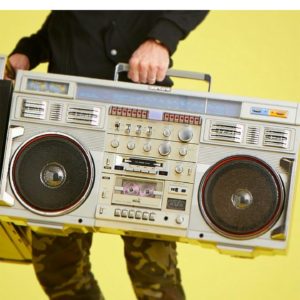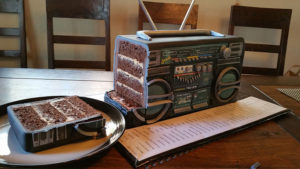Being the Customer @eBay

Buying and selling vintage boomboxes on eBay allowed me to experience the products I design through the customer-lens.
User-centered design is at the heart of my personal UX ethos. Design is about solving problems, and this requires a deep understanding of the customer and their goals. Walking the line between customer need and business need tends to be a delicate balance in our industry, but by arming yourself with a solid foundation of knowledge around the user and their problem space, you’ll be prepared to rock those executive level conversations when business and customer needs go head-to-head.
Practicing empathy and understanding the customer allows designers to live in the users shoes, focusing not just on overt needs, but the connection to users feelings, constraints, practices, contexts, and interrelations. Usability testing and research is a powerful tool in our UX toolkit which allows us to observe user behavior and interaction constraints and dependencies. This ultimately allows UX designers to define methodologies that instill delight, trust, and confidence in the experience, which in turn often addresses business requirements and goals as well. Designing complex software products often means you have too many chefs in the kitchen. Usability testing and qualitative/quantitate studies allow us to unblock decision making via data and metrics, not personal summation or subjective speculation.
I’m a featured designer on the eBay Design site. I was invited to a photo-shoot to express the deep connection I have to the products I buy & sell.

The boombox, AKA ghettoblaster, has become one of the most prominent and iconic symbols of the 80’s. It defined a cultural generation, and it’s image continues to appear on hipster tote-bags, iPhone cases, and t-shirts. It’s one of the most over-produced objects in the world with thousands of variations, shapes, styles and colors. At it’s height in the mid 80’s it’s popularity grew to encompass a wide cultural swath of young and old, from street-kids, hip-hop and b-boys, to the wealthy upper-class. It was a symbol of individuality, and for many inner city youth it was an urban campfire of sorts. Drawing crowds of young kids together, uniting communities to the sounds of local rappers, break-beat and dance, and street style culture. By the late 80’s the quality and appearance of most brands had declined, giving way to smaller, less distinct models that were poorly designed and produced.

When I was a little kid in the early 80’s, there was this dude we called Zero. He lived across the street from me and had a huge Conion C-100F boombox. He would crank AC/DC and walk around looking cool. I wanted one so bad, and when Christmas came along Santa gave me a modest little black Panasonic. Mom and dad had no idea it was uncool, but I loved it dearly and made many mix tapes with it’s sleek side-by-side recording setup and superior sound. I would sit for hours listening to “Rick Dees Weekly Top 40”, waiting for the precise second to hit the record button to catch the beginning of the song.
I bought my first cassette tape in 1984 with a $10 bill my Grandma gave me for my birthday. Michael Jackson: Bad. To me the boombox is one of the last vestiges of raw design. It’s a machine with a distinct presence. Spinning tapes on gears, large chrome dials, flashing lights, switches, and buttons. Speaker grills that produce shaky bass from old cardboard cones. Each model was unique.
I was always jealous of Zero’s huge shiny blaster with it’s chromed-out grills and massive sound. I finally got a Conion C-100F on eBay, and it’s amazing.










